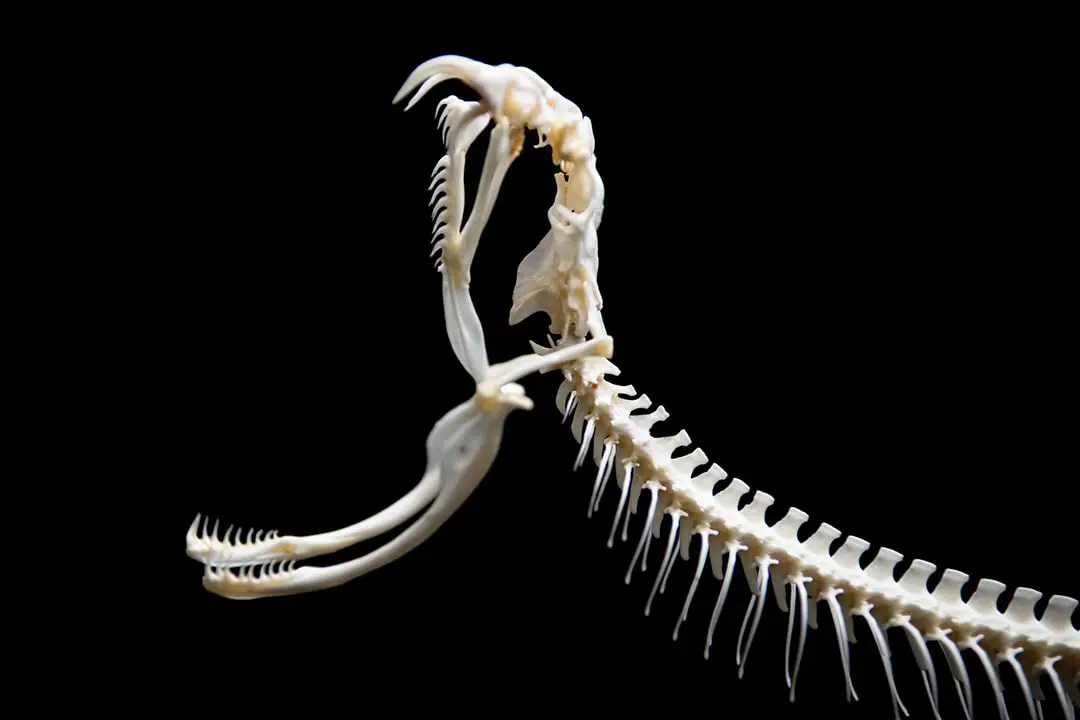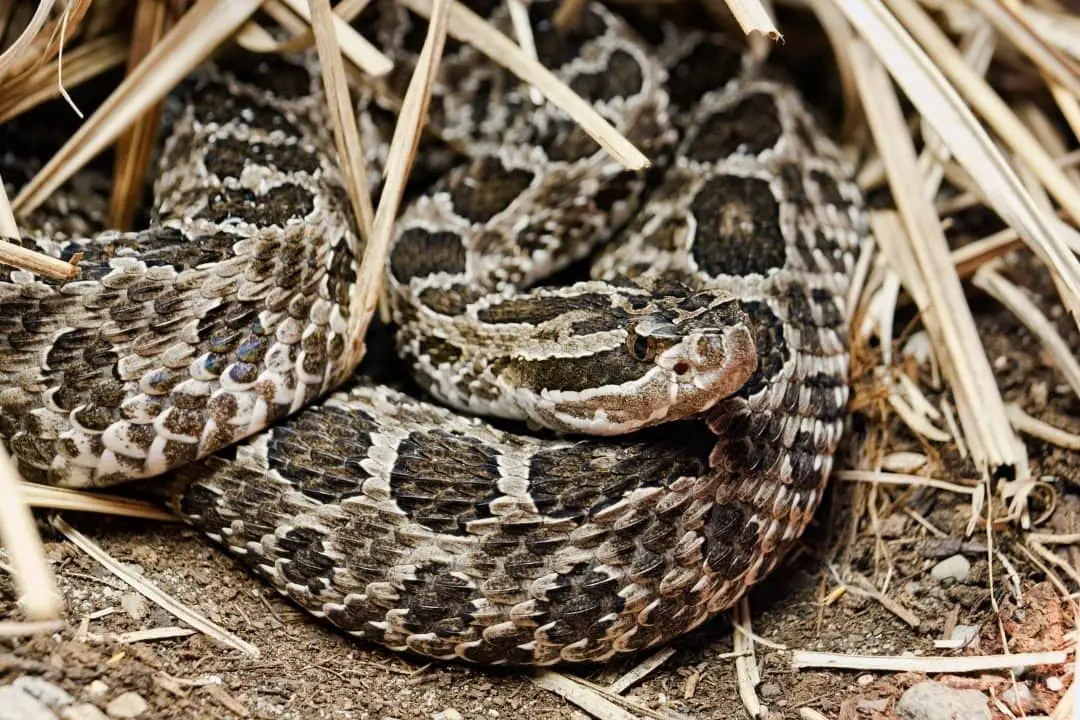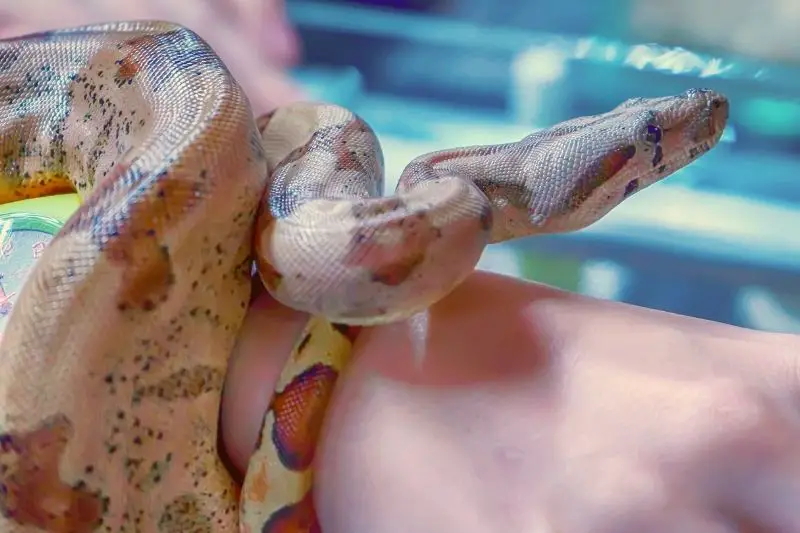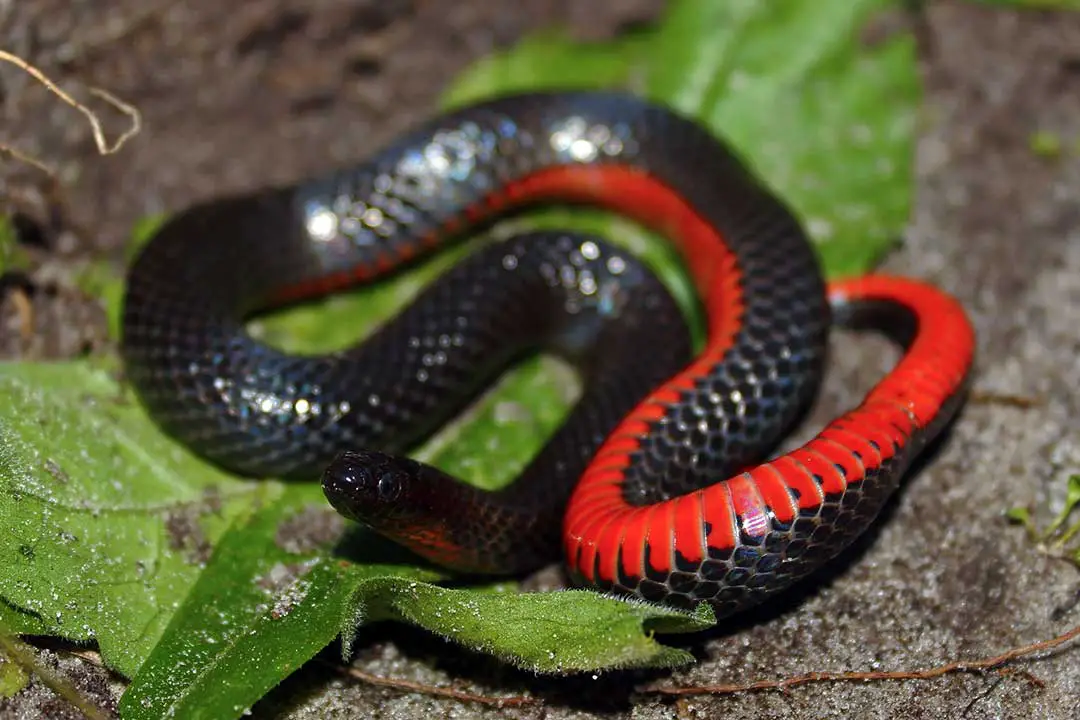Snakes are interesting, limbless reptiles. These predators have specialized in consuming large prey with uniquely stretchy jaws amd incredibly mobile skulls.
You may be wondering whether snakes count as vertebrates like mammals and lizards or invertebrates like worms.
Are snakes vertebrate or invertebrate?
All snakes are vertebrates, like all other reptiles.There is no such thing as a spineless snake. If it has an internal skeleton, it is a vertebrate.
Vertebrate Vs Invertebrate
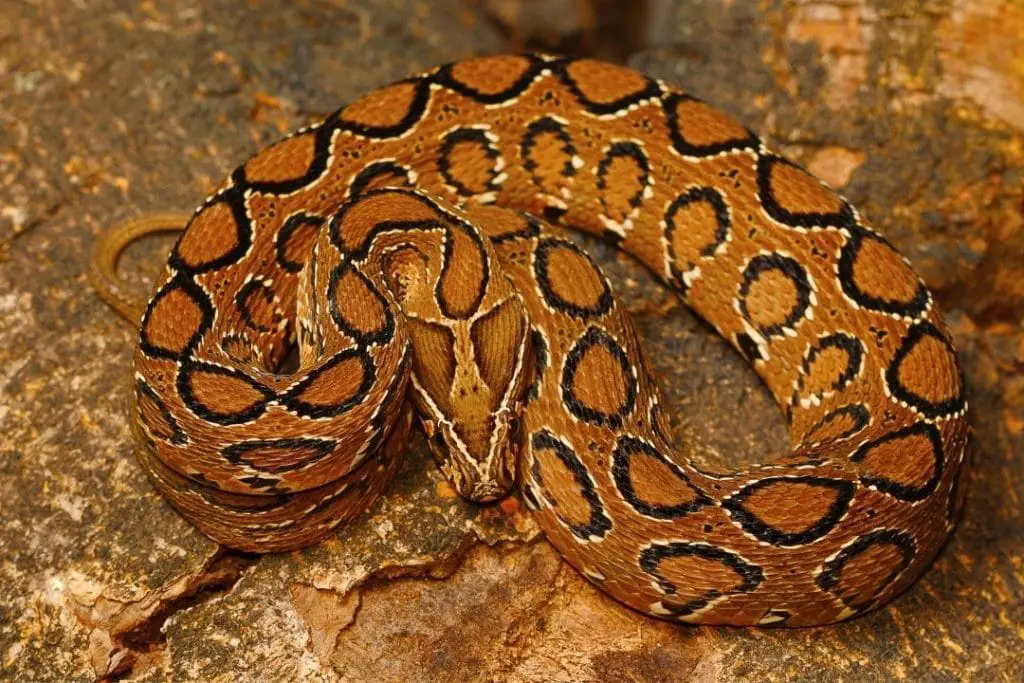
There are many ways to split apart animal life. One of the biggest is the presence or lack of a spine. Invertebrates are all unified by a lack of a spinal cord and skeleton.
Invertebrates include a wide variety of animals living on land and under water. Insects like ants and beetles are all invertebrates.
Jellyfish and the wide variety of worm species are also invertebrates. Vertebrates all have a spinal cord and either a rigid skeleton or a similar system made of cartilage like sharks.
Examples of vertebrates include birds, many fish, mammals, and reptiles. This places snakes firmly in the vertebrate category.
Snake Anatomy
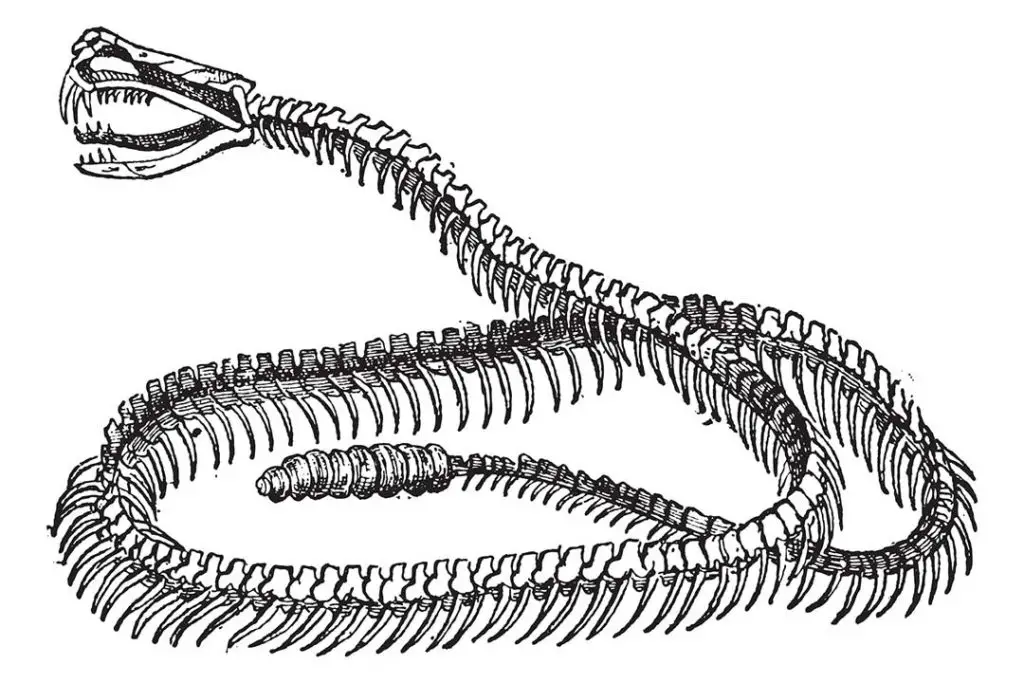
Snakes do indeed have a skeleton.
While different families of snakes can have different anatomies, the basics remain the same. Snakes have a spinal column that goes all the way down the body.
The vast majority of a snake’s body includes the ribcage. All of the snake’s major organs like the lungs, heart, reproductive system, and the entire digestive system are contained within the ribs.
This means that snakes have a very long rib cage compared to most animals.
They do have a tail, which can be easily noticed in the skeleton by noting where the ribs stop.
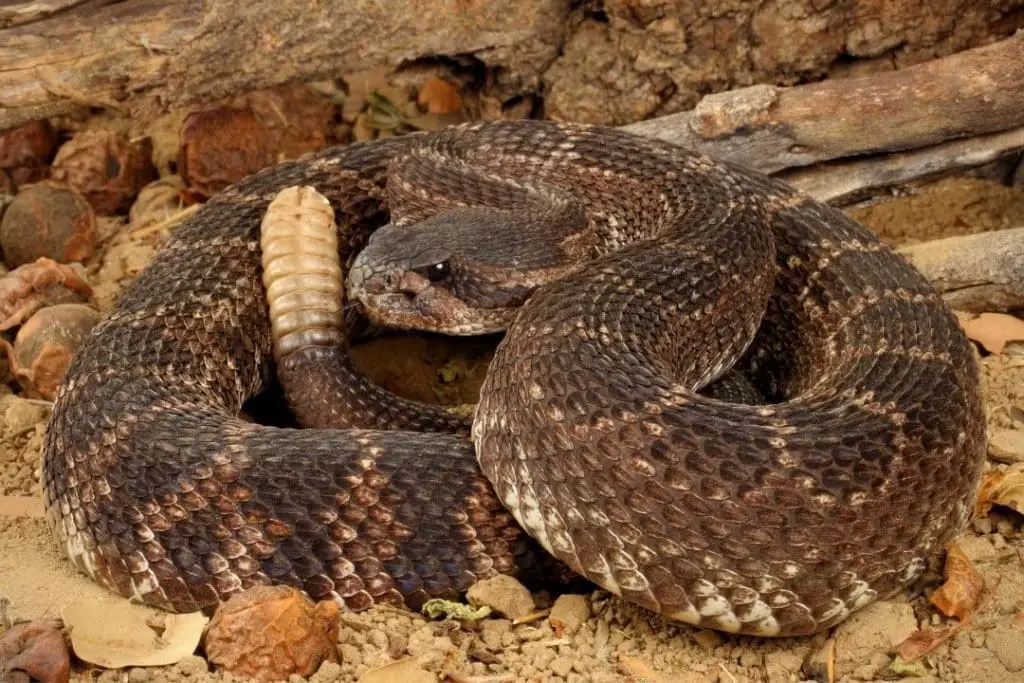
In the primitive snakes like boas and pythons, that do retain a very small portion of the back limbs. If you look at a live python or boa, you will note a pair of bony “spurs” located near the vent or cloaca.
These spurs are the vestigial remains of the hind limbs. These spurs are used primarily for mating purposes now. If you were to look at a complete python or boa skeleton, you would note that a the spurs are connected to a pelvis.
The vast majority of snake species lack this feature now. One thing to note is that not all animals called pythons or boas are actually boas or pythons.
Pythons and boas both retain the vestigial limbs as well as two functioning lungs.
Advanced snakes have only one functioning lung that is elongated to match the body shape better. Most species of snake are considered advanced.
This includes colubrids like kingsnakes and corn snakes along with the famous venomous snakes like cobras and vipers. Primitive snakes include pythons like ball pythons, blood pythons, and Angolan pythons.
Boas are also primitive and include species like the rainbow boa, boa constrictor, and anaconda.
Confusion
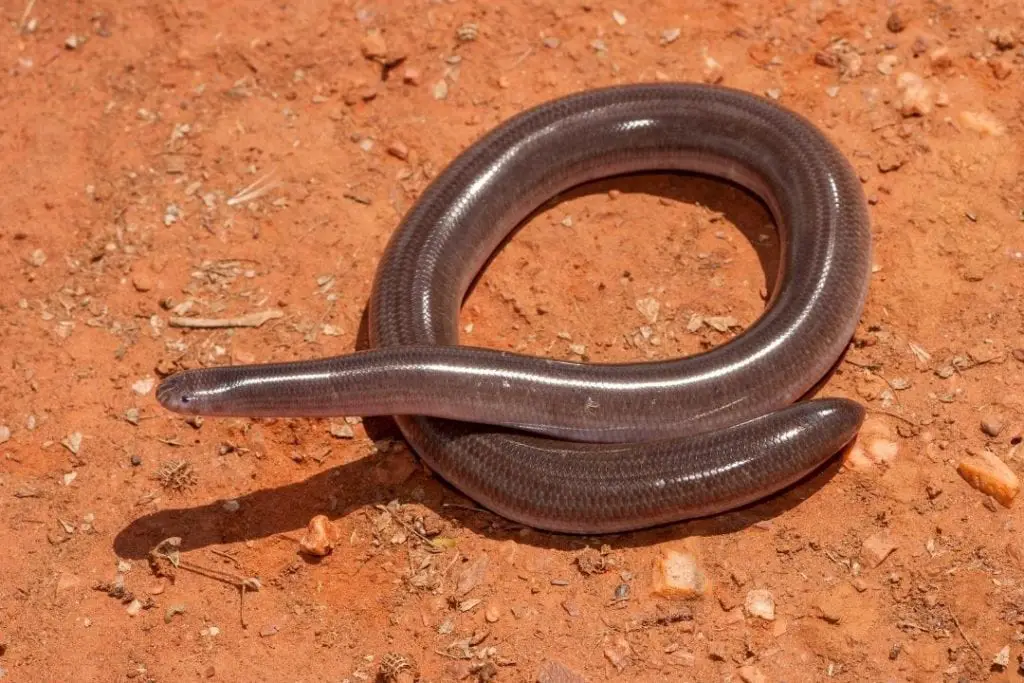
While all snakes are vertebrates, there are some species that are easy to mistake for invertebrates.
There is a large number of snake species referred to as the blind snakes. These small snakes spend the vast majority of their lives burrowed underground.
Most feed on ants or termites. Many even specialize on feeding solely on eggs or larvae of these insects. The interesting thing about these snakes is that they have completely lost their vision.
Most snakes have a clear scale over the eye that keeps the eye moist while allowing for vision. Blind snakes have an opaque scale that covers the eye. This means that these snakes can’t see at all.
Blind snakes are typically small snakes and rarely get longer than a foot. They are also frequently brown in color. This makes it easy to mistake them for earthworms.
Many look almost identical to worms at first glance. This means that they can be easily mistaken for an invertebrate. It can take a close look to realize that you are looking at a reptile.
The biggest tells are the scales and the eyes. While the snake cannot see, if you look at the head you can still see the eyes under the scales in many species.
Sometimes large worms can also be mistaken for snakes. Most people are familiar with small garden worms that rarely attain lengths larger than a foot. However, some species of worm can be impressively large. Nightcrawlers are longer and thicker than typical earthworms. It can be easy to mistake them. Some species of worm are also brightly colored and may resemble local snake species. Some of the largest terrestrial worms can attain massive sizes. The largest earthworm is found in Australia and reaches over 3 feet in length. It can look very similar to a snake at first glance. Other species of worm can reach lengths and thicknesses that make it easy to confuse them for snakes. If you are not sure of the identity of an animal you are looking at, try spotting scales. Worms do not have scales so this is an easy way to tell without picking up the animal and possibly stressing it out.
Conclusion
Snakes are reptiles. They are descended from lizards that lost their limbs and specialized in swallowing prey whole. Over millions of years, snakes lost their limbs and developed specialized jaws.
Like lizards, snakes are vertebrates. This means that they have a spine and skeleton. Some small species of snake like the blind snakes can be mistaken for worms.
This does not mean that they are invertebrates. We hope this taught you a but more about these ensuing animals.
If you have any questions or comments, please leave them below.
